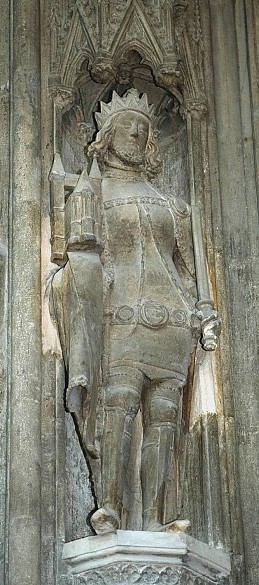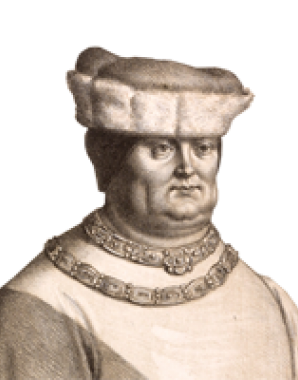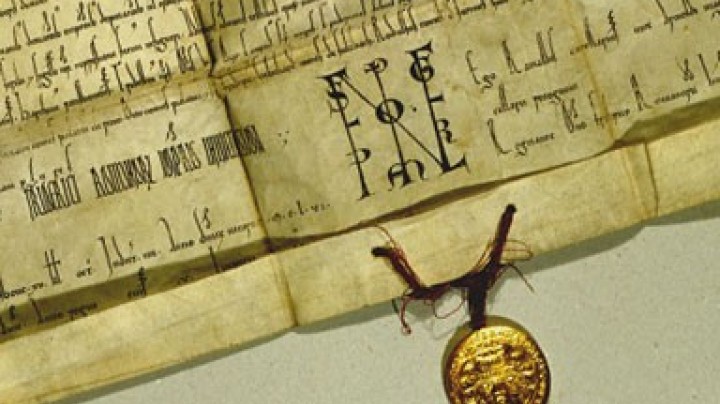Rudolf IV and the ambitions of the dynasty
Rudolf’s birth was celebrated almost as a miracle. His parents, Duke Albrecht II and Joan of Ferrette, were relieved of a huge worry: after fifteen years of childless marriage a healthy baby boy had finally been born.
Rumours began to circulate to the effect that Albrecht, whose mobility was severely limited by a degenerative joint disease, was not capable of siring children and could thus not have been the child’s father. Duke Albrecht had these rumours condemned as falsehoods from the church pulpits.
For a nobleman of his times, Rudolf was given an above-average education. He was evidently able to write, as attested by surviving examples of his handwriting.
The young prince was involved from an early age in his father’s project of rapprochement with the House of Luxembourg, which had possessed the crown of Bohemia since 1311 and had thus become a powerful neighbour of the Habsburgs. Albrecht attempted to achieve reconciliation with the Luxembourgs following the clash over the acquisition of Carinthia and Carniola in 1335. In 1344, when Rudolf was five years old war, the plan was aired to betroth him to Catherine of Luxembourg (1342 or 1343–1395). Catherine was the daughter of Charles, the future king of Bohemia and the strongest candidate for the imperial crown. In 1348 the betrothal between the nine-year-old Rudolf and the six-year-old Catherine was confirmed. The marriage took place in Prague in 1353. Rudolf thus became the son-in-law of King Charles IV.
In 1355 Rudolf’s father Albrecht II declared a rule of inheritance (the Albertine House Rule) that was intended to prevent the looming division of the Habsburg power base and the weakening of the position of the dynasty as a whole. The document stipulated that his four sons were to rule jointly over the Habsburg lands (Austria, Styria, Carinthia and Carniola and the Forelands, the ancestral possession in Swabia and the Aargau). A special position fell to Rudolf as the first-born. This together with the benevolent protection of his father-in-law Charles IV bolstered the young prince’s self-assurance, a quality in which he was not naturally lacking. Rudolf found not only a model in Charles, who is regarded as one of the most important medieval rulers, but also a rival.













